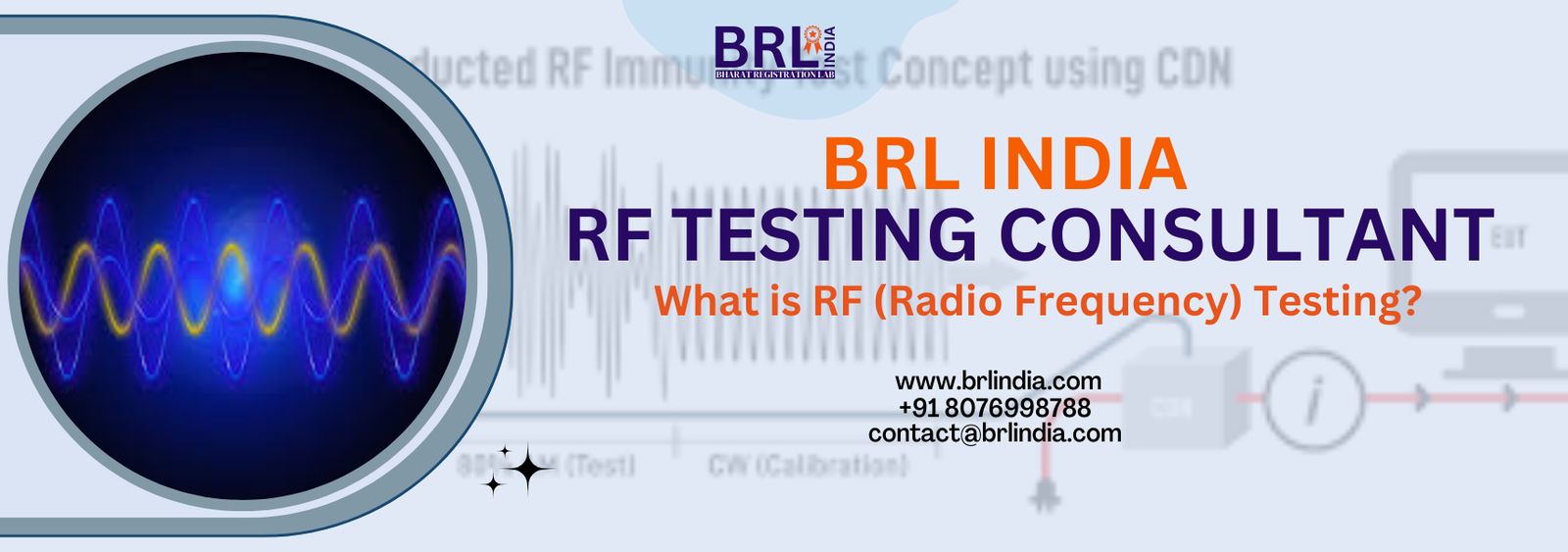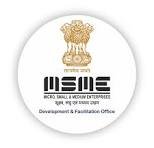
What is RF (Radio Frequency) Testing?
introduction of RF Testing
In our interconnected world, where the airwaves are bustling with radio waves, ensuring the seamless operation of radio broadcasts is paramount. Just as traffic congestion on highways can impede smooth travel, the airwaves too can become crowded, requiring meticulous testing and setup of radio frequencies. At the heart of this lies radio frequency (RF) testing, a critical process that scrutinizes the frequency usage of radio broadcasts to optimize spectrum utilization and uphold regulatory standards.
From tuning in to a favorite radio station to relying on Wi-Fi, GPS, cellular devices, and more, radio frequency permeates various aspects of our daily lives. Compliance with frequency standards is not just advisable but mandated by law in most markets. This underscores the importance of RF testing, especially for manufacturers and service providers, including cellular companies obligated to adhere to RF standards across multiple jurisdictions.
RF testing encompasses a range of assessments, evaluating parameters such as output power, receiver and transmitter performance, sensitivity, and blocking. It's not a one-size-fits-all endeavor; rather, testing methodologies vary based on the specific standards governing the device, with organizations like OSHA providing safety benchmarks.
The process of RF testing typically involves isolating the device in a controlled environment to minimize electromagnetic interference, closely monitoring emissions to prevent disruptions to other devices. Additionally, RF immunity testing assesses a device's capability to withstand interference from external sources, ensuring robust performance under diverse conditions.
Key objectives of RF testing include verifying compliance with wavelength and emission strength guidelines outlined in government regulations. Failure to meet these standards can lead to attenuation, a phenomenon characterized by signal loss due to obstruction or interference. Whether it's the physical barriers affecting Wi-Fi signals or overlapping broadcasts causing interference, RF testing helps identify potential issues before devices enter the market or operational environments.
Interference, a common challenge in RF environments, can manifest in various forms, categorized as Narrow Band or Broadband. Narrow Band interference involves short, narrow wavelengths, while Broadband interference encompasses larger wavelengths associated with digital television broadcasts and wireless systems like Wi-Fi and Bluetooth. By conducting tests across both frequency ranges, RF interference can be accurately pinpointed, preempting potential disruptions.
In summary, RF testing is a complex yet essential process, ensuring the efficiency, compliance, and reliability of radio devices in diverse applications. By adhering to regulatory standards and conducting thorough testing, manufacturers and service providers not only meet legal obligations but also deliver products and services that seamlessly integrate into the marketplace and operational ecosystems.
What is RF (Radio Frequency) Testing?
RF (Radio Frequency) testing is a critical process ensuring efficient utilization of spectrum space by radio broadcasts while complying with regulatory standards. It involves assessing various aspects of devices like output power, receiver/transmitter performance, sensitivity, and blocking. RF tests cover a wide array of broadcasts such as Wi-Fi, GPS, cellular devices, etc., mandated by law in most markets.
Performed in controlled environments to minimize electromagnetic interference, RF tests monitor emissions to prevent interference with neighboring devices. Additionally, testing for RF immunity evaluates a device's capability to withstand external interference. These tests focus on maintaining emission strength within regulatory guidelines to prevent attenuation, the loss of signal strength caused by physical obstructions or interference between signals.
Identifying interference types, including Narrow Band and Broadband, is crucial for proper testing. Narrow Band refers to broadcasts with short wavelengths, while Broadband covers larger wavelengths like Wi-Fi and cellular signals. RF testing aids in preemptively identifying issues like Adjacent-Channel Interference, ensuring compliance before devices enter markets or workspaces.
Understanding RF testing's complexity underscores its regulatory importance, ensuring compliance and efficient operation of radio devices in various environments.
Applications of RF Testing Approvals in India
Applications of RF Testing Approvals in India encompass various regulatory processes ensuring compliance with wireless frequency standards. These approvals serve diverse purposes such as:
-
Equipment Type Approval (ETA): Validates the type of equipment in compliance with RF standards.
-
Type Approval: Ensures the conformity of specific device types with RF regulations.
-
Experimental Approval: Facilitates the experimental use of devices while adhering to RF guidelines.
-
Dealer and Non-dealer Possession Licenses (DPL and NDPL): Enables legal possession and distribution of RF-enabled devices by dealers.
-
Import Licenses for Radio Equipment: Regulates the importation of radio-enabled devices, ensuring compliance with RF standards before entering the Indian market.
These applications cater to various entities involved in the manufacturing, distribution, and importation of wireless-enabled gadgets and electronic devices, ensuring adherence to RF regulations mandated by the Department of Telecommunications (DoT) in India.
How Are RF Tests Performed?
A radio frequency test is performed by taking the device and placing it in an isolated area. The area is controlled to minimize electromagnetic interference with the device. From there, the device is monitored closely for any emissions that would interfere with the operation of other devices in the area.
Testing can also be done on the device for RF immunity, which is its ability to handle any interference that it might receive from other devices. This kind of testing involves subjecting the device to interference and measuring its performance under those conditions.
What Do RF Tests Look For?
These tests primarily look to ensure that a product remains withing certain guidelines for wavelengths and emission strength. These are used to ensure that the device is operating within the specific guidelines of government regulations.
The main kind of problem that can result from a failure to meet these regulations is a problem called attenuation. Attenuation, as a general concept, refers to the loss of signal strength on a broadcast.
Attenuation of a radio signal typically results from some form of obstruction of the signal. Often times, these obstructions are physical in nature. For example, if you’ve ever noticed that your Wi-Fi seems slower upstairs, you’re experiencing a form of attenuation. You’re losing signal strength as it travels through the floors and walls.
However, attenuation can also result from interference between signals. If two signals are occupying the same wavelength and frequency, they can cause problems on the receiving end. A good example of interference causing signal loss is when you try to pick up a radio station and hear it cut back and forth between two different broadcasts.
These regulations are designed to ensure that attenuation happens as little as possible. Proper testing can pick up on signs that the device may cause issues in that regard.
For example, a device that broadcasts with too much power for its specific range may overpower other signals on that bandwidth. This will cause attenuation in the signals, and it can result in the overpowered signal bleeding into the other broadcasts.
Online Process for WPC Approval in India:
1. Visit the DoT Online Portal: Access the official website of the Department of Telecommunication (DoT).
2. Create User Account: To obtain WPC approval, create a user ID and password on the WPC ETA official website.
3. Apply for New ETA: After logging in, navigate to the appropriate tab and click on "Apply for new ETA."
4. Verify Import Undertaking: If you are an importer seeking WPC approval for equipment using various forms of radiofrequency, authenticate your import undertaking by entering the import ID and captcha code.
5. Fill Application Form: Complete the application form with details such as:
- - Primary applicant/authorized person/representative details.
- - Device information including type, model number, manufacturer/importer details.
- - Frequency range (e.g., for Bluetooth devices, frequency details).
- - Output power and modulation range.
6. Submit Application: Once the form is filled, submit it on the portal for assessment and authentication by the Licensing Authority.
7. Assessment and Approval: The Licensing Authority will carefully assess the application. If found complete, the authority may issue WPC approval for RF testing of the specific device.
8. Required Documents:
Ensure all necessary documents are attached with the application, including:
- - Proof of identification of the manufacturer/importer.
- - Proof of registered business address.
- - Business entity constitution documents.
- - Certificate of incorporation or registration.
- - RF Exposure Report.
- - Technical guide of the product.
9. Benefits of WPC Approval: Enjoy benefits such as:
- - Compliance with national and international standards.
- - Global recognition and market access.
- - Utilization of spectrum effectively and protection of the spectrum.
10. Post-Approval Compliance: After obtaining RF testing approval, comply with requirements such as:
- - Ensuring the device meets frequency bandwidth requirements.
- - Maintaining records and submitting them to the ministry.
- - Notifying the licensing authority of any changes in the device.
11. Validity and Renewal: The approval remains valid until the model's validity period or as long as it's manufactured without modification. Renewal may be necessary upon expiry or modification.
Conclusion
Radio Frequency (RF) Testing is an essential process in the manufacturing of electronic devices to ensure their compliance with regulatory standards and safe usage. In India, obtaining RF Testing approval, also known as Wireless Planning & Coordination (WPC) Approval, from the Department of Telecommunications (DoT) is mandatory for manufacturers and importers of wireless-enabled devices. The WPC, under the Ministry of Telecommunications, oversees Frequency Spectrum Management and grants ETA licenses for IT and electronic products.
RF Testing approvals cover various aspects such as Equipment Type Approval, Type Approval, Experimental Approval, and Import Licenses. The process involves fulfilling prerequisites like being a manufacturer or importer of wireless-enabled devices, providing RF Test Reports from accredited laboratories, and complying with technical specifications.
The online application process through the DoT portal facilitates the submission of necessary documents and self-declarations. Upon assessment, if found complete, the licensing authority issues RF Testing Approval, enabling market access and ensuring compliance with national and international standards.
Post-registration, holders of RF Testing Approval must adhere to compliance requirements, maintain records, and inform authorities of any modifications to the devices. The validity of approval lasts until the model's validity period or until modifications are made, requiring renewal thereafter.
Overall, RF Testing Approval streamlines the process of ensuring the safety, efficiency, and regulatory compliance of wireless-enabled devices, facilitating their entry into the Indian market and ensuring consumer protection.
At BRL India, we offer expertise and assistance in navigating the RF testing approval process, ensuring your devices meet regulatory standards and gain market access. Contact us at contact@brlindia.com or call 8076998788 to schedule your consultation and streamline your RF testing approval journey.









